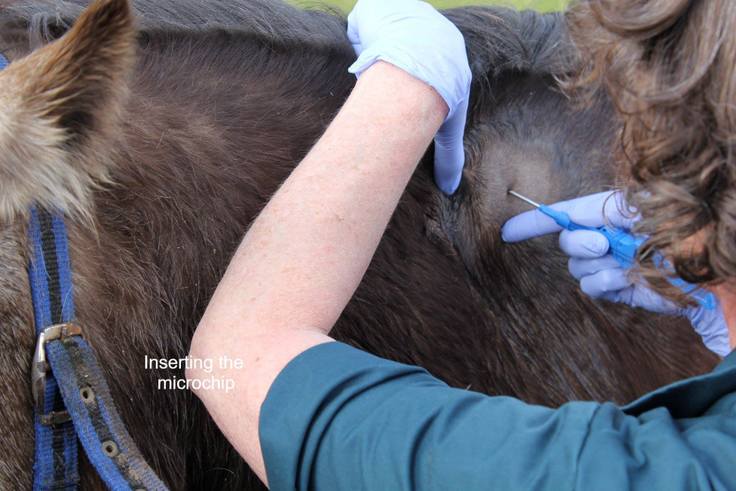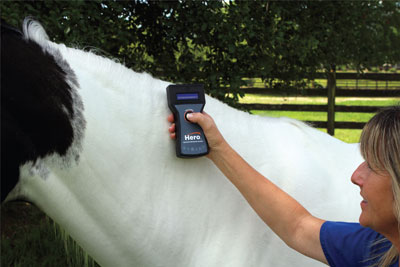Microchipping Your Horse
go.ncsu.edu/readext?624808
en Español / em Português
El inglés es el idioma de control de esta página. En la medida en que haya algún conflicto entre la traducción al inglés y la traducción, el inglés prevalece.
Al hacer clic en el enlace de traducción se activa un servicio de traducción gratuito para convertir la página al español. Al igual que con cualquier traducción por Internet, la conversión no es sensible al contexto y puede que no traduzca el texto en su significado original. NC State Extension no garantiza la exactitud del texto traducido. Por favor, tenga en cuenta que algunas aplicaciones y/o servicios pueden no funcionar como se espera cuando se traducen.
Português
Inglês é o idioma de controle desta página. Na medida que haja algum conflito entre o texto original em Inglês e a tradução, o Inglês prevalece.
Ao clicar no link de tradução, um serviço gratuito de tradução será ativado para converter a página para o Português. Como em qualquer tradução pela internet, a conversão não é sensivel ao contexto e pode não ocorrer a tradução para o significado orginal. O serviço de Extensão da Carolina do Norte (NC State Extension) não garante a exatidão do texto traduzido. Por favor, observe que algumas funções ou serviços podem não funcionar como esperado após a tradução.
English
English is the controlling language of this page. To the extent there is any conflict between the English text and the translation, English controls.
Clicking on the translation link activates a free translation service to convert the page to Spanish. As with any Internet translation, the conversion is not context-sensitive and may not translate the text to its original meaning. NC State Extension does not guarantee the accuracy of the translated text. Please note that some applications and/or services may not function as expected when translated.
Collapse ▲With hurricane season now peaking here in North Carolina, we all know that permanent identification is important when it comes to having livestock and reclaiming them in the aftermath of a natural disaster. Some of the more traditional forms of identification include branding and tattooing but microchipping is gaining traction in the equine world especially after seeing how it has benefitted dog and cat owners for the last 20 years or so.
Benefits to Microchipping your Horse Include:
- Permanent Identification Method
- Cannot be altered
- Assists in reuniting animals with owners after emergencies
- Decreased cheating at shows and other competitive equine events
- Relatively inexpensive
- Easier tracking and quicker containment of disease outbreaks
The process to insert the microchip is quick and can be done by your veterinarian as part of any routine checkup. Most animals are scanned before inserting a microchip to confirm that the horse has not been previously chipped. If no chip is present, the vet will locate the nuchal ligament (1.5 – 2 inches below mane line) and will insert the rice-sized microchip using a sterile needle after administering a local anesthetic. The microchip will then be scanned to make sure it was properly inserted and can be read with the hand-held scanner. The chip number is recorded in the horse’s records at this time and should be registered with the proper microchip company by following the directions with the paperwork that accompanies the microchip. The insertion site will be tender for a few days just like when an injection is given but as long as sterile protocol was followed, the risk of infection or further complications should be none to minimal.
Most veterinarians do not charge more than $75 for this procedure and that includes the price of the microchip itself. Extensive studies have shown that if properly inserted, chips will not migrate, they cannot be disabled with magnets and they do NOT cause cancer. Most microchips last at least 25 years. Remember, these chips do not include GPS capability so they must be recorded with the proper registry in order to work as intended. If you purchase a previously microchipped horse from someone, make sure to update your information with the registry. Also update your information when you move or change your contact information.
For more information about microchipping your horse, storm preparedness/recovery or anything else mentioned in this article please contact the agriculture agent at your local cooperative extension office.







